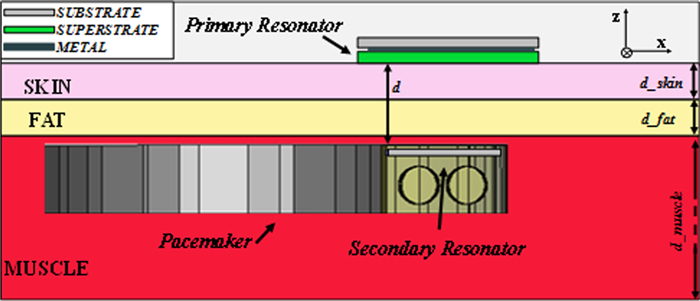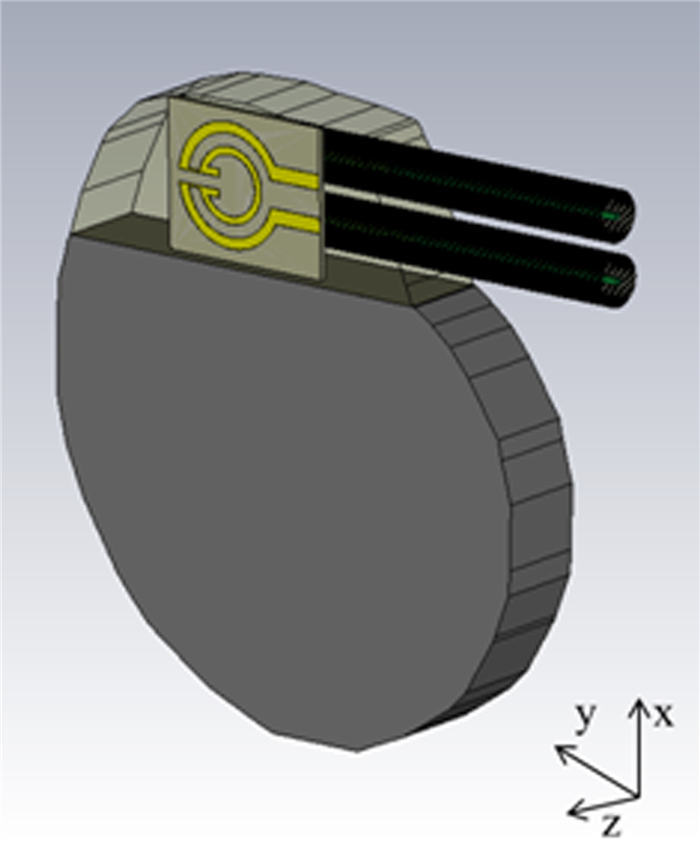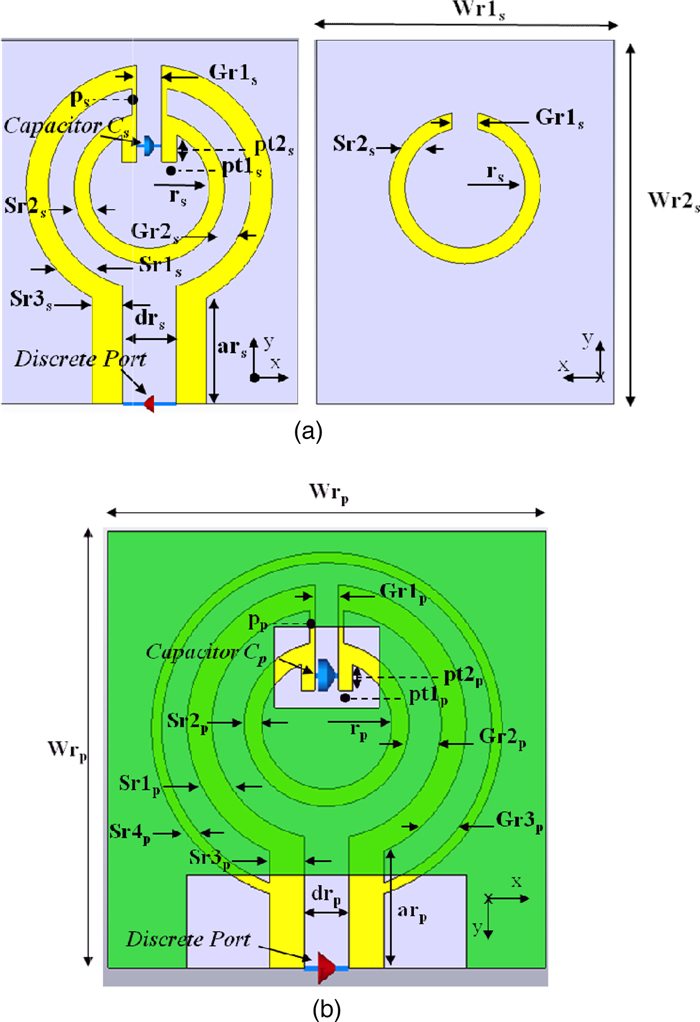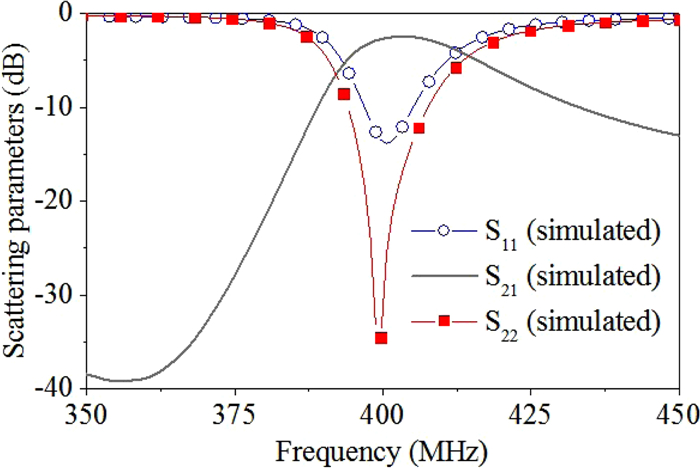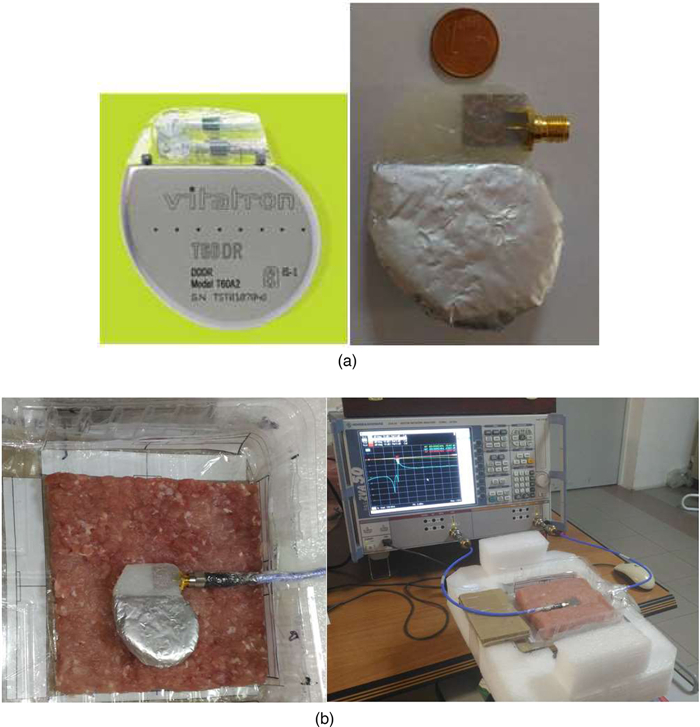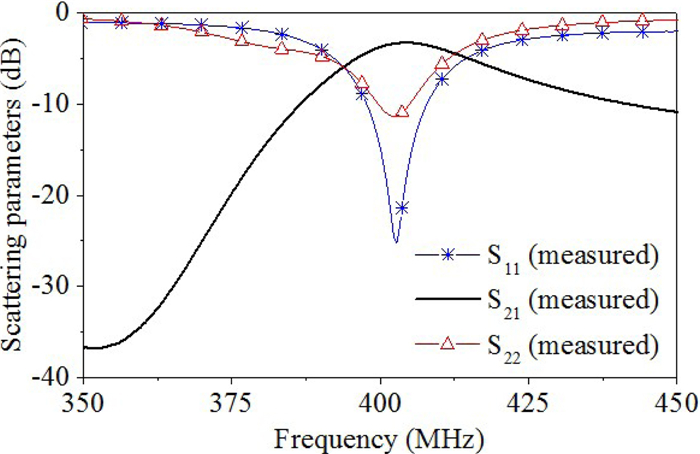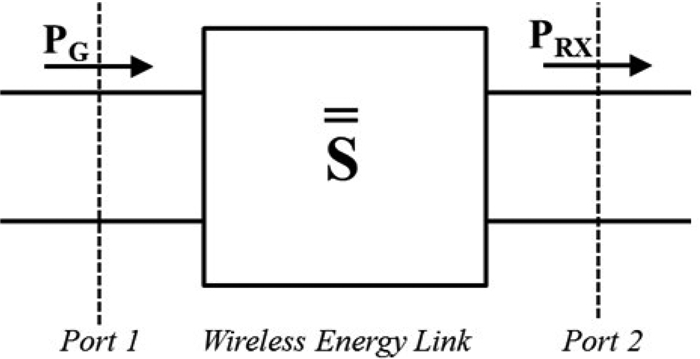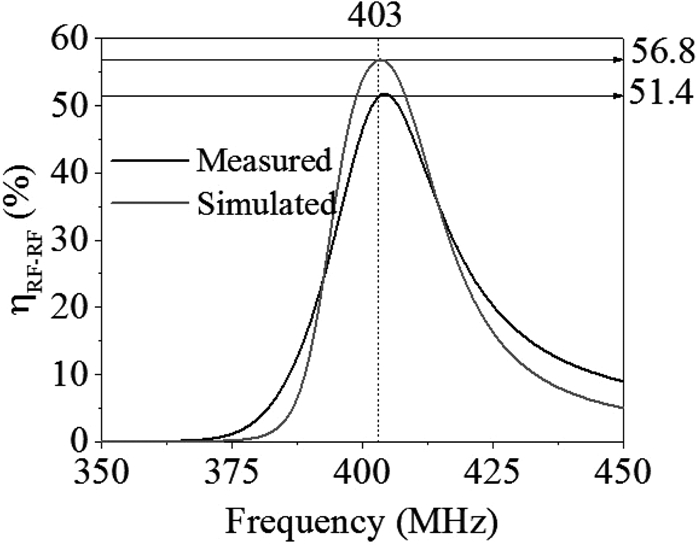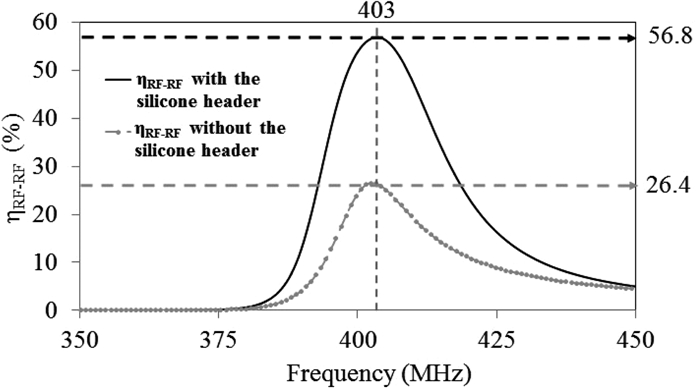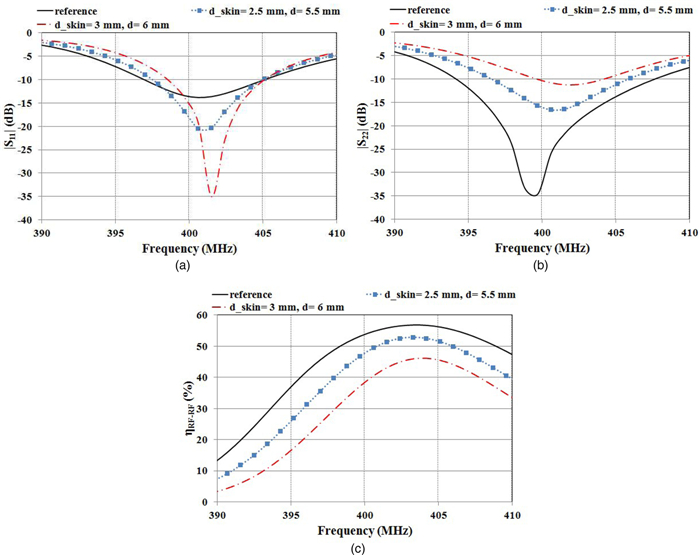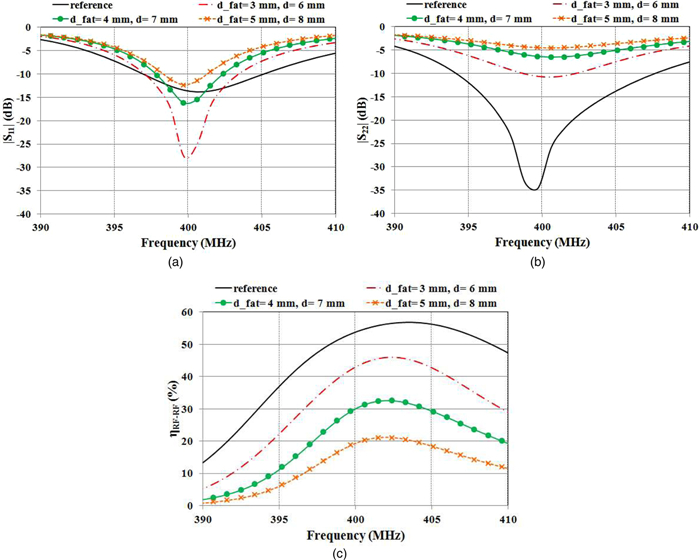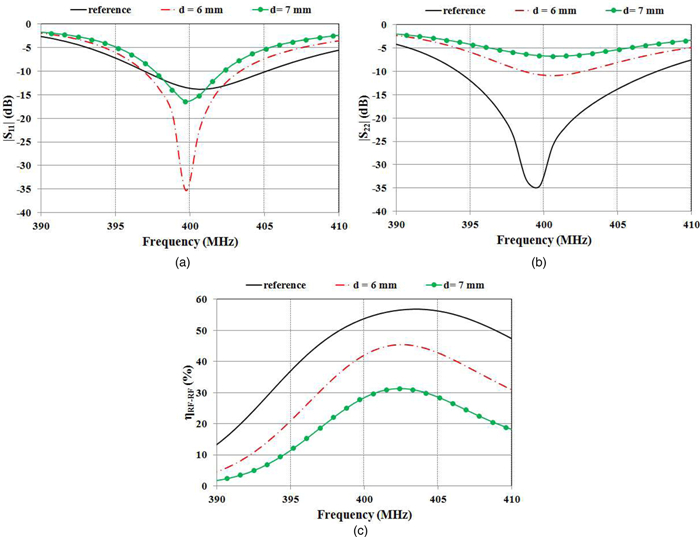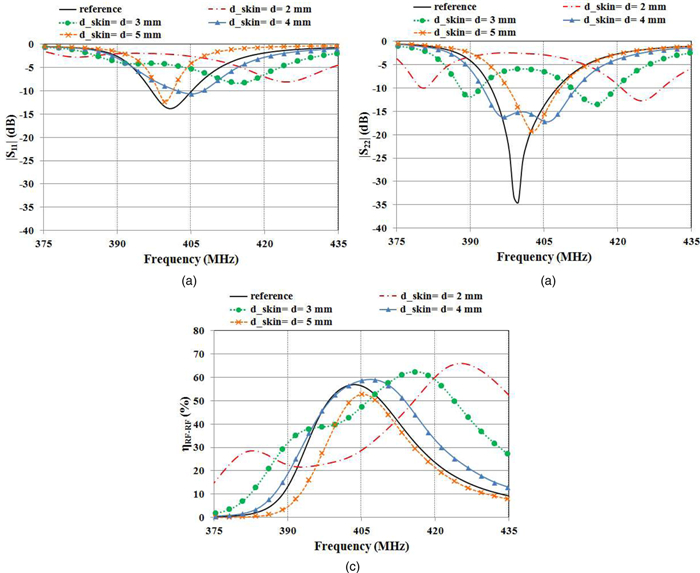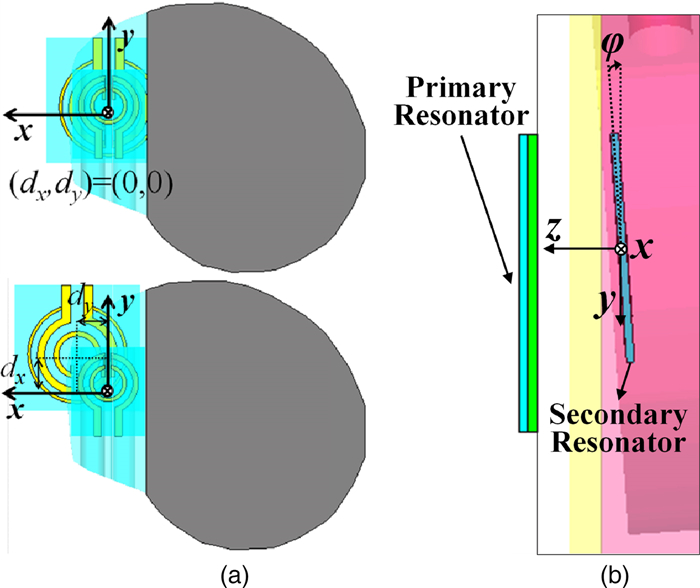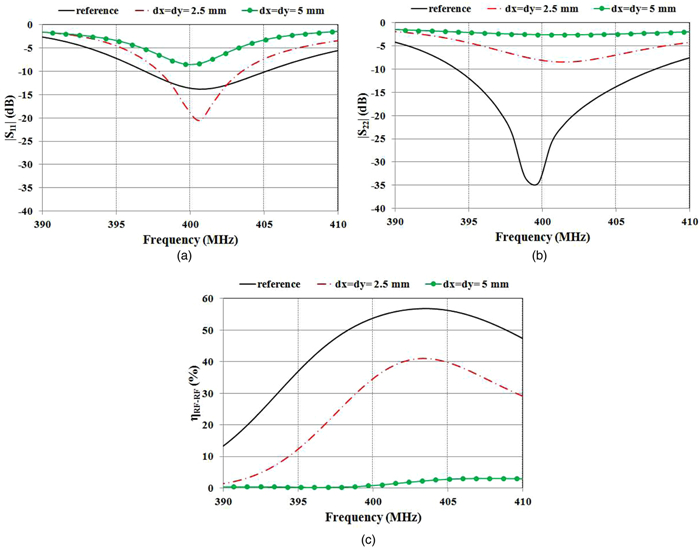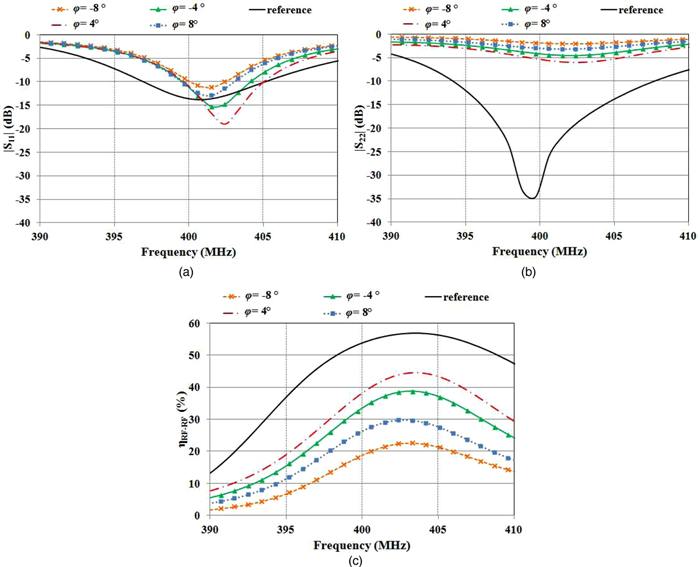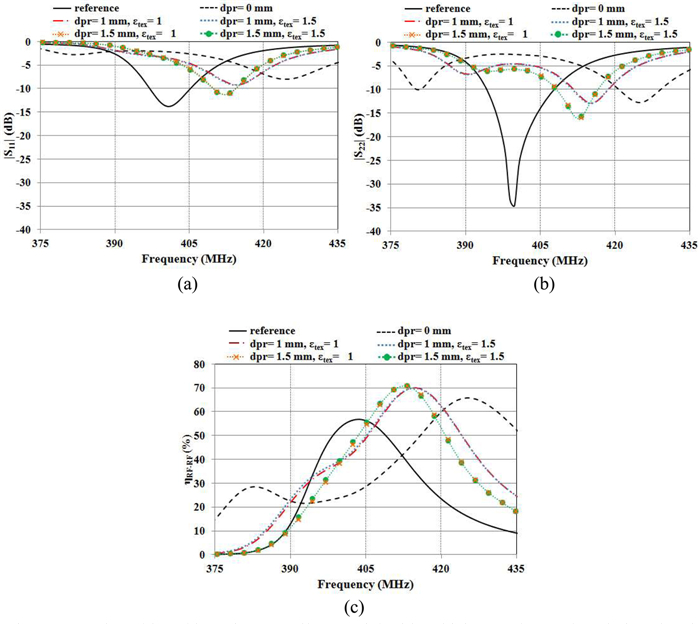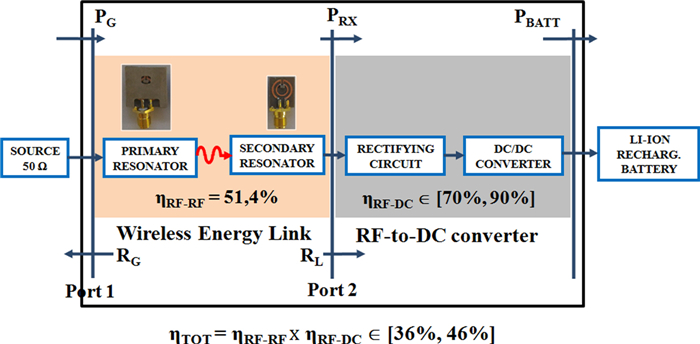Inductive link for power and data transfer to a medical implant
-
1.
Department of Engineering for Innovation, University of Salento, Lecce, Italy. Phone: +39 0832 297365
-
2.
Department of Engineering, University of Perugia, Perugia, Italy
More Information
-
Author Bio:
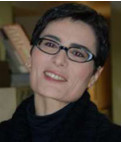 Giuseppina Monti
Giuseppina Monti (M'16-SM'16) received the Laurea degree in Telecommunication Engineering (with honors) from the University of Bologna, Bologna, Italy, in 2003, and the Ph.D. degree in Information Engineering from the University of Salento, Lecce, Italy, in 2007. She is currently with the Department of Innovation Engineering, University of Salento, Lecce, Italy, as a Temporary Researcher and Lecturer in CAD of microwave circuits and antennas. Her current research interest includes the analysis and applications of artificial media, the design and realization of microwave components, MEMS-based reconfigurable antennas and devices, rectennas, and systems and devices for wireless power transmission applications. She has co-authored three book chapters and more than 100 papers in international conferences and journals.
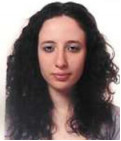 Maria Valeria De Paolis
Maria Valeria De Paolis received the M.S. degree in Telecommunications Engineering (cum laude) from the University of Salento, Lecce, Italy, in 2014. She is a Ph.D. student at the University of Salento. Her research activity is focused on the design of wireless power transfer systems for biomedical applications.
 Laura Corchia
Laura Corchia was born in Italy, in 1980. She received the M.S. degree in Telecommunication Engineering and the Ph.D. in Information Engineering from the University of Salento, Lecce, Italy, in 2007 and 2011, respectively. She is currently a Postdoctoral Researcher with the Department of Engineering for Innovation, University of Salento. Her research interests include the development of near- and far-field wireless power transfer links and power management units for wearable applications, the design and the fabrication of reconfigurable antennas, the characterization of antennas and microwave devices.
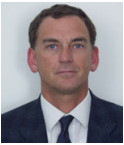 Mauro Mongiardo
Mauro Mongiardo (F'11) has received the Laurea degree (110/110 cum laude) in Electronic Engineering from the University of Rome “La Sapienza” in 1983. In 1991, he became Associate Professor of Electromagnetic Fields, and from 2001, he is a Full Professor of Electromagnetic Fields at the University of Perugia. He has been elected Fellow of the IEEE for “for contributions to the modal analysis of complex electromagnetic structures” in 2011. The scientific interests of Mauro Mongiardo have concerned primarily the numerical modeling of electromagnetic wave propagation both in closed and open structures. His research interests have involved CAD and optimization of microwave components and antennas. Mauro Mongiardo has served in the TPC of the IEEE IMS from 1992. From 1994, he is a member of the Editorial Board of the IEEE TMTT. During the years 2008–2010, he has been associate editor of the IEEE TMTT. He is author or co-author of over 200 papers and articles in the fields of microwave components, microwave CAD, and antennas. He is the co-author of the books “Open Electromagnetic Waveguides” (IEE, 1997) and “Electromagnetic Field Computation by Network Methods” (Springer, 2009).
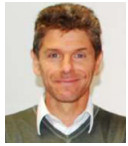 Luciano Tarricone
Luciano Tarricone received the Laurea degree in Electronic Engineering (cum laude) and Ph.D. degree from Rome University “La Sapienza”, Rome, Italy, in 1989 and 1994, respectively. From 1990 to 1992, he was a Researcher with the IBM Rome Scientific Centers. From 1992 to 1994, he was with the IBM European Center for Scientific and Engineering Computing, Rome, Italy. Between 1994 and 1998, he was a Researcher with the University of Perugia, Perugia, Italy, and between 1998 and 2001, he was a “Professore Incaricato” of electromagnetic (EM) fields and EM compatibility. Since November 2001, he has been a Faculty Member with the Department of Innovation Engineering, University of Salento, Lecce, Italy, where he is a Full Professor of EM fields and coordinates a research group of about 15 people. He has authored and co-authored approximately 300 scientific papers. His main contributions are in the modeling of microscopic interactions of EM fields and biosystems, and in numerical methods for efficient CAD of microwave circuits and antennas. He is currently involved in bioelectromagnetics, electromagnetic energy harvesting and wireless power transmission, novel CAD tools and procedures for microwave circuits, RFID, and EM high-performance computing
-
Corresponding author:
G. Monti Email: giuseppina.monti@unisalento.it
-
Abstract
This paper presents a resonant inductive link for power and data transfer to a pulse generator implanted in the chest. The proposed link consists of two planar resonators and has been optimized for operating in the MedRadio band centered at 403 MHz. The wireless power/data link occurs between an external resonator operating in direct contact with the skin and a receiving resonator integrated in the silicone header of a pulse generator implanted in the chest. Numerical and experimental results are presented and discussed. From measurements performed by using minced pork to simulate the presence of human tissues, an efficiency of about 51% is demonstrated. The feasibility of using the proposed link for recharging the battery of the medical device in compliance with safety regulations is also verified and discussed.
-
About this article
Cite this article
Monti G, De Paolis M V, Corchia L, Mongiardo M, Tarricone L. 2017. Inductive link for power and data transfer to a medical implant. Wireless Power Transfer 4(2): 98-112 doi: 10.1017/wpt.2017.6
|
Monti G, De Paolis M V, Corchia L, Mongiardo M, Tarricone L. 2017. Inductive link for power and data transfer to a medical implant. Wireless Power Transfer 4(2): 98-112 doi: 10.1017/wpt.2017.6
|


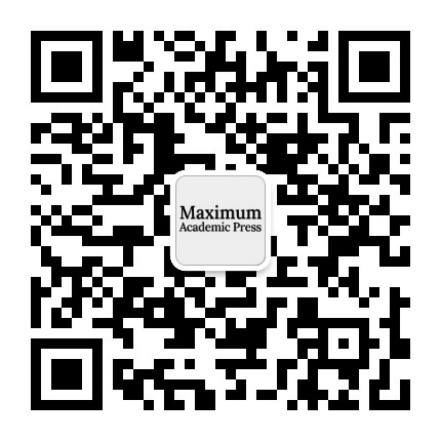







 Giuseppina Monti (M'16-SM'16) received the Laurea degree in Telecommunication Engineering (with honors) from the University of Bologna, Bologna, Italy, in 2003, and the Ph.D. degree in Information Engineering from the University of Salento, Lecce, Italy, in 2007. She is currently with the Department of Innovation Engineering, University of Salento, Lecce, Italy, as a Temporary Researcher and Lecturer in CAD of microwave circuits and antennas. Her current research interest includes the analysis and applications of artificial media, the design and realization of microwave components, MEMS-based reconfigurable antennas and devices, rectennas, and systems and devices for wireless power transmission applications. She has co-authored three book chapters and more than 100 papers in international conferences and journals.
Giuseppina Monti (M'16-SM'16) received the Laurea degree in Telecommunication Engineering (with honors) from the University of Bologna, Bologna, Italy, in 2003, and the Ph.D. degree in Information Engineering from the University of Salento, Lecce, Italy, in 2007. She is currently with the Department of Innovation Engineering, University of Salento, Lecce, Italy, as a Temporary Researcher and Lecturer in CAD of microwave circuits and antennas. Her current research interest includes the analysis and applications of artificial media, the design and realization of microwave components, MEMS-based reconfigurable antennas and devices, rectennas, and systems and devices for wireless power transmission applications. She has co-authored three book chapters and more than 100 papers in international conferences and journals.  Maria Valeria De Paolis received the M.S. degree in Telecommunications Engineering (cum laude) from the University of Salento, Lecce, Italy, in 2014. She is a Ph.D. student at the University of Salento. Her research activity is focused on the design of wireless power transfer systems for biomedical applications.
Maria Valeria De Paolis received the M.S. degree in Telecommunications Engineering (cum laude) from the University of Salento, Lecce, Italy, in 2014. She is a Ph.D. student at the University of Salento. Her research activity is focused on the design of wireless power transfer systems for biomedical applications.  Laura Corchia was born in Italy, in 1980. She received the M.S. degree in Telecommunication Engineering and the Ph.D. in Information Engineering from the University of Salento, Lecce, Italy, in 2007 and 2011, respectively. She is currently a Postdoctoral Researcher with the Department of Engineering for Innovation, University of Salento. Her research interests include the development of near- and far-field wireless power transfer links and power management units for wearable applications, the design and the fabrication of reconfigurable antennas, the characterization of antennas and microwave devices.
Laura Corchia was born in Italy, in 1980. She received the M.S. degree in Telecommunication Engineering and the Ph.D. in Information Engineering from the University of Salento, Lecce, Italy, in 2007 and 2011, respectively. She is currently a Postdoctoral Researcher with the Department of Engineering for Innovation, University of Salento. Her research interests include the development of near- and far-field wireless power transfer links and power management units for wearable applications, the design and the fabrication of reconfigurable antennas, the characterization of antennas and microwave devices.  Mauro Mongiardo (F'11) has received the Laurea degree (110/110 cum laude) in Electronic Engineering from the University of Rome “La Sapienza” in 1983. In 1991, he became Associate Professor of Electromagnetic Fields, and from 2001, he is a Full Professor of Electromagnetic Fields at the University of Perugia. He has been elected Fellow of the IEEE for “for contributions to the modal analysis of complex electromagnetic structures” in 2011. The scientific interests of Mauro Mongiardo have concerned primarily the numerical modeling of electromagnetic wave propagation both in closed and open structures. His research interests have involved CAD and optimization of microwave components and antennas. Mauro Mongiardo has served in the TPC of the IEEE IMS from 1992. From 1994, he is a member of the Editorial Board of the IEEE TMTT. During the years 2008–2010, he has been associate editor of the IEEE TMTT. He is author or co-author of over 200 papers and articles in the fields of microwave components, microwave CAD, and antennas. He is the co-author of the books “Open Electromagnetic Waveguides” (IEE, 1997) and “Electromagnetic Field Computation by Network Methods” (Springer, 2009).
Mauro Mongiardo (F'11) has received the Laurea degree (110/110 cum laude) in Electronic Engineering from the University of Rome “La Sapienza” in 1983. In 1991, he became Associate Professor of Electromagnetic Fields, and from 2001, he is a Full Professor of Electromagnetic Fields at the University of Perugia. He has been elected Fellow of the IEEE for “for contributions to the modal analysis of complex electromagnetic structures” in 2011. The scientific interests of Mauro Mongiardo have concerned primarily the numerical modeling of electromagnetic wave propagation both in closed and open structures. His research interests have involved CAD and optimization of microwave components and antennas. Mauro Mongiardo has served in the TPC of the IEEE IMS from 1992. From 1994, he is a member of the Editorial Board of the IEEE TMTT. During the years 2008–2010, he has been associate editor of the IEEE TMTT. He is author or co-author of over 200 papers and articles in the fields of microwave components, microwave CAD, and antennas. He is the co-author of the books “Open Electromagnetic Waveguides” (IEE, 1997) and “Electromagnetic Field Computation by Network Methods” (Springer, 2009). 


